Rerurn to Romy the Cat's Site
In the Forum: Horn-Loaded Speakers
In the Thread: Big mama 1.5" horns....
Post Subject: Azura 204Hz and 340Hz Le Cleac'h horn photosPosted by NBC on: 9/13/2006
 Here are some photos of Martin Sedon's 204Hz and 340Hz Le Cleac'h horns, which likely have more reasonable shipping charges and fit through doorways, etc. better than the 160Hz version. They have a T-factor (expansion rate) of T = 0.8, which was recommended to Martin by Jean-Michel Le Cleac'h.
Here are some photos of Martin Sedon's 204Hz and 340Hz Le Cleac'h horns, which likely have more reasonable shipping charges and fit through doorways, etc. better than the 160Hz version. They have a T-factor (expansion rate) of T = 0.8, which was recommended to Martin by Jean-Michel Le Cleac'h.
You can find Martin and Jean-Michel's email addresses on the internet if you look around on google.
Interesting related post by Romy: http://www.goodsoundclub.com/TreeItem.aspx?PostID=1851
Regards,
Neil
PS: Romy, if these photos are too large for your taste, I can resize them. But one can certainly see a lot of detail of the horns texture and construction in this way.
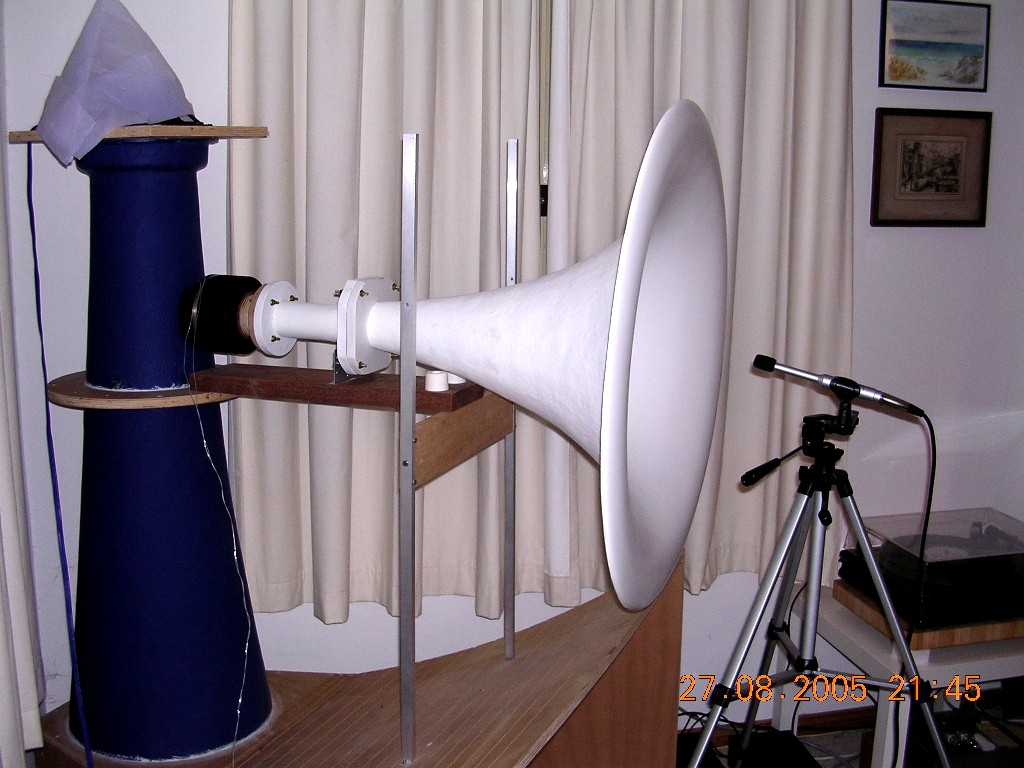

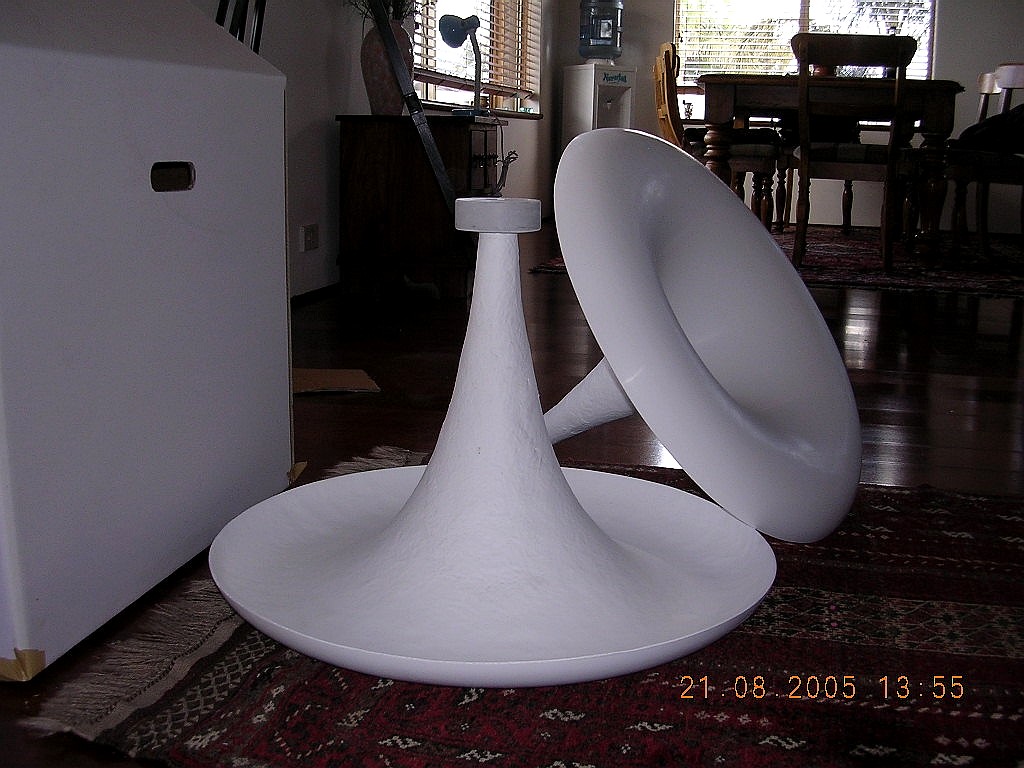

Some good comments from Romy I pasted from elsewere on this site:
"One more thing, you said that “they sound better when crossed over above 800Hz.” Any compression driver sound better when you have 1-2 octaves under it’s lower knee and when the driver (and horn!!!) is not overwhelmed with the lover mid range. (It I what most ignorant people love to do: to peruse as low crossover point as possible for their compression drivers driver mid-channels and eliminate the upper bass drivers. This is a big mistake and I consider that upper bass channel is the key for any horn loaded installation)"
"So, if you suggest that it “sound better when crossed over above 800Hz” that why do you use the 300Hz horn? I personally find that most 300 Horns are conceptually faulty as they have too large bell for the typical 2”-4”compression driver. If you have a chance then try to load your 2440, crossed at 800Hz into 400-450Hz horn instead of 300Hz. You will have many benefits: a shorter horn, twice smaller horn, better HF, wider dissipation pattern, less throat reactance (less air mass in the bell), better transient response, way less possibility to get horn’s honk, ability to use “more interesting” low pass filter in your upperbass channel…."
"What I have seen was that people load their compression drivers into the belly of the oversized horns. As the result they do not ingrate their upperbass channel with the horn-loaded mid-channels but they integrate their upperbass channel with those artificial lower-mid frequency noise coming from the large belly of the oversized horns, that horns that in their case act as the “virtual resonators” and produce more the “large barrel sound” then actual useful sound."
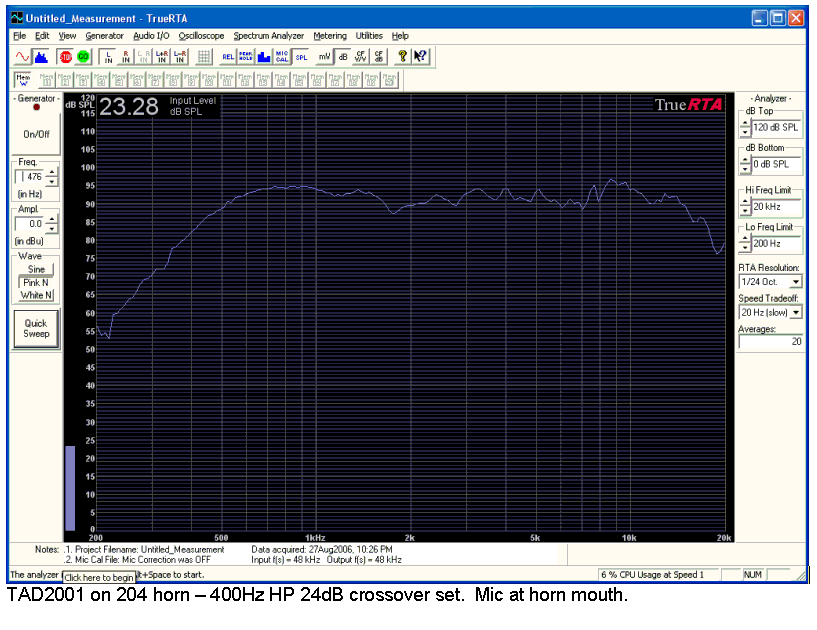
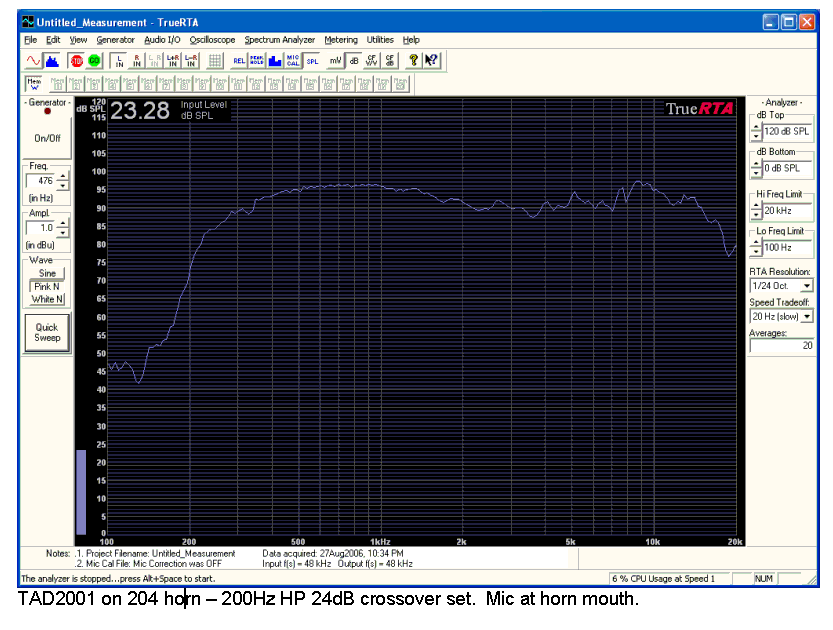
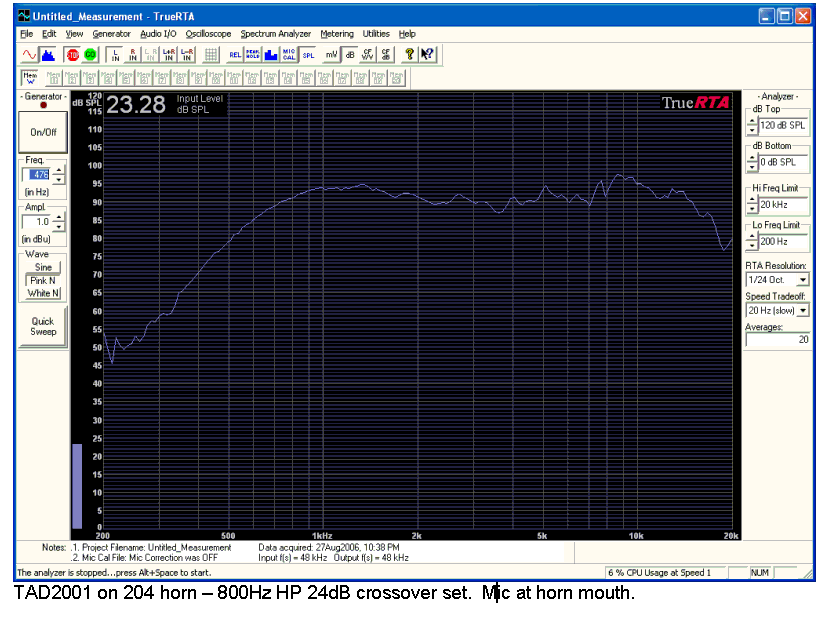
Rerurn to Romy the Cat's Site